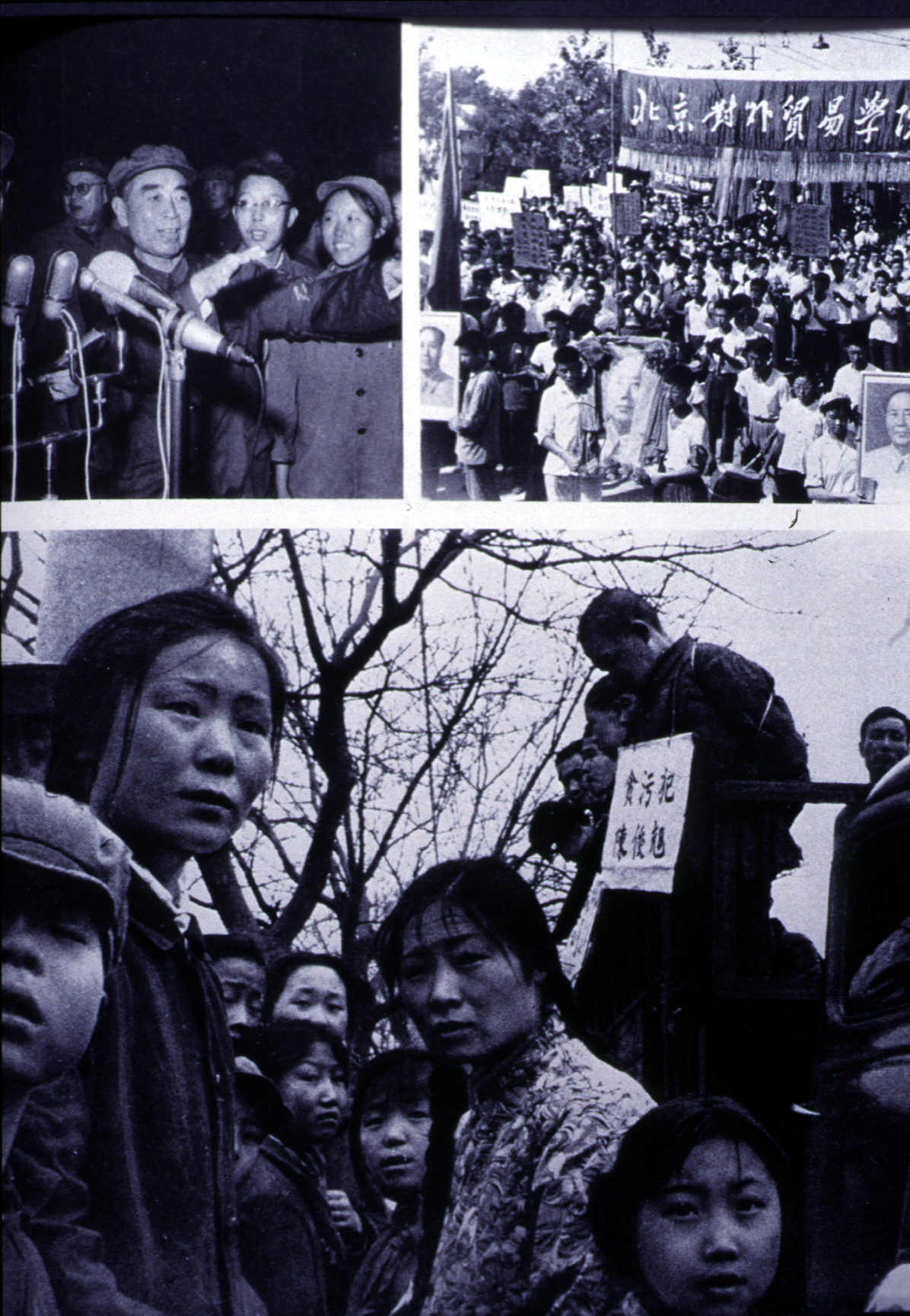

After the GLF, Mao's power was dimished within the party's leadership. He came back to the top of the CCP with a vengeance, however, by unleashing the Cultural Revolution in the mid 1960s. Mobilizing China's urban youth and the Red Army, made up primarily of peasants from the countryside, Mao attacked the bureaucratic party elite that he saw as the foundation of a new ruling class. In this picture (top left) two of Mao's closest supporters, Jiang Qing and Lin Biao speak to the students of Beijing University, compelling them to join the new revolutionary campaign. The second picture (top right) shows a demonstration in support of "The Thought of Mao Zedong" organized by students in Beijing, many of them carrying pictures of Mao and banners with slogans in support of the Cultural Revolution. The large picture (bottom) shows a group of party bureaucrats, assailed by Mao as "capitalist roaders" and "revisionists," being denounced by students and paraded around town with placards admitting their crimes. The Cultural Revolution amounted to a political struggle between Mao and the "modernist" faction within the Chinese Communist Party led by Liu Shaoqui and Deng Xiaoping. Liu was killed during the Cultural Revolution and Deng spent most of the ten-year period between 1966-76 in a rural reeducation camp. The Cultural Revolution succeeded in bringing Mao back to power, but, like the GLF, it led to chaos. In1969 Mao was forced to call in the army to put down violent demonstrations in several cities. Source: Keith Buchanan, China: The Land and the People (New York: Crown Publishers, 1980).